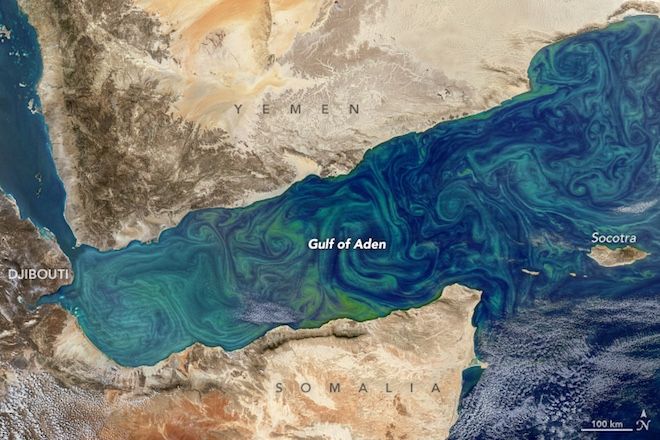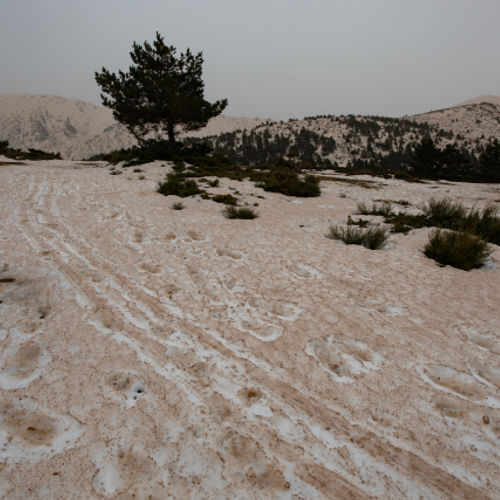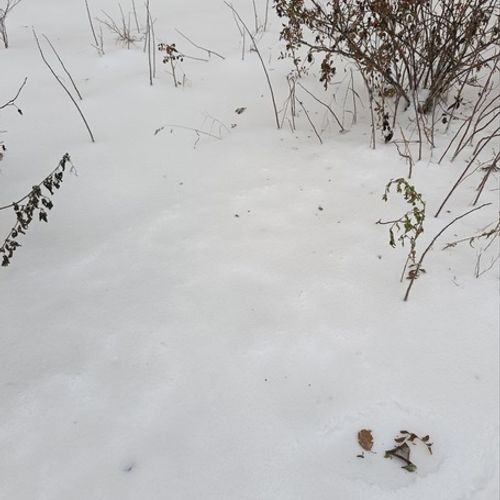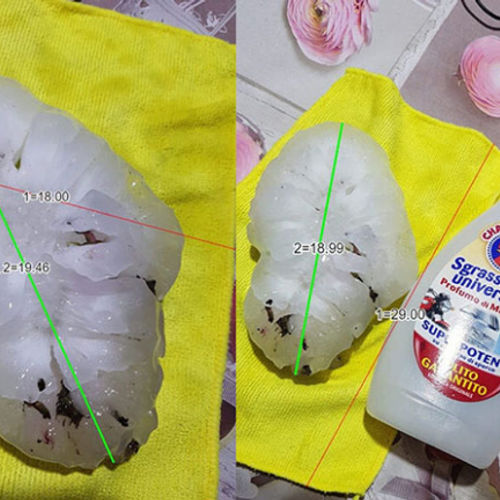
| Added | Tue, 03/04/2018 |
| Источники | |
| Дата публикации | Tue, 03/04/2018
|
| Версии |
In the Gulf of Aden, the largest phytoplankton bloom appear in mid-summer near the coast of Yemen and in the middle of autumn near the coast of Somalia. But flowering often occur in other seasons, including winter.
The winter phytoplankton bloom is visible in this image, compiled from data recorded on 12 February 2018 by MODIS on the NASA satellite "Aqua". To pictures applied a series of processing steps to distinguish the difference in color and to emphasize the subtle shape of the blossom. The image shows how the phytoplankton swirl in the Gulf on the Western edge of the Arabian sea.
No water sample and analysis is impossible to say exactly what type of phytoplankton is blooming. "NASA hopes that once will be better able to identify different types of phytoplankton from orbit using hyperspectral instruments designed specifically for touch remote measurement of ocean color, says Norman Kuring, oceanologist from the space flight Center of NASA Goddard. — Mission for the study of plankton, aerosol, cloud, ocean ecosystem PACE, which is now in the process of development, is one of the ambitious endeavors."
On the same day, when was a satellite image, researchers working on the ship in the Northern Arabian sea, identified a bloom of Noctiluca scintillans, which has spread from the coast of Oman to India. Joaquim Goes, oceanographer from the Observatory Lamont-Doherty ERT provided the photo below. It — bloom of N. scintillans 12 February 2018 off the coast of Muscat in Oman.
Understanding how flowering can vary in composition, size, location and time — is important in order to know how their presence or absence affects marine ecosystems and fisheries. Phytoplankton can be an important source of food for marine mammals, shellfish, and marine invertebrates. Some flowering can be so dense that clog desalination plants in the Arabian sea.
Translated by «Yandex.Translator»
© NASA
Translated by «Yandex.Translator»
Новости со схожими версиями
Log in or register to post comments









